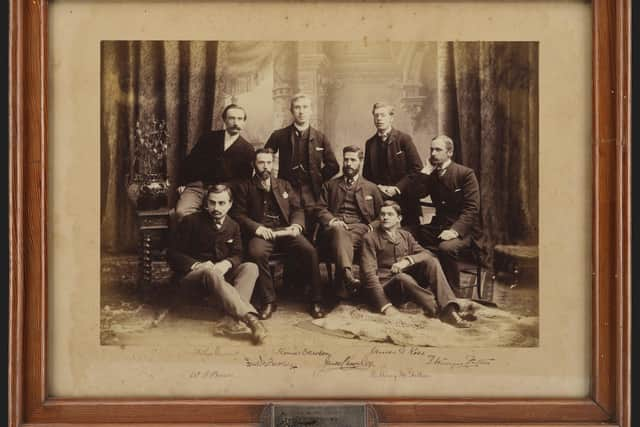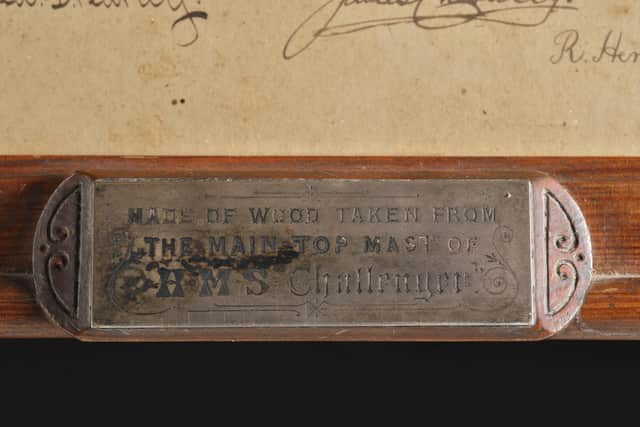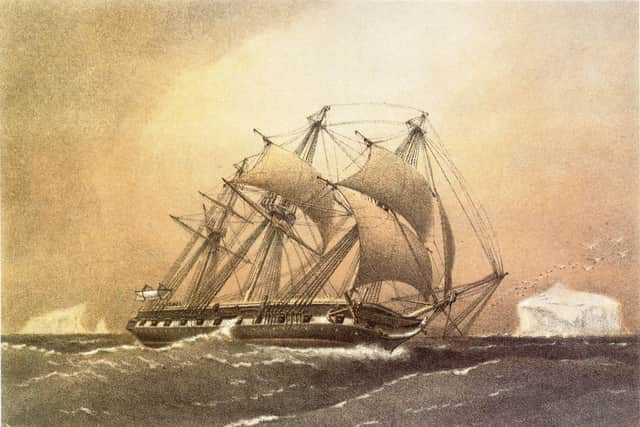Rare photograph found in Edinburgh second-hand shop and framed by wood from HMS Challenger left to nation
The image, which was framed by the wood from the mast of HMS Challenger and features the team charged with archiving and researching finds made on the ship’s revolutionary journey of some 70,000 nautical miles, has now been permanently added to the collection of National Museums Scotland.
It was previously owned by Dr David P Blight, who found it in Mrs Virtue’s junk shop in Stockbridge in the early 1960s.
Advertisement
Hide AdAdvertisement
Hide AdHMS Challenger set sail from Portsmouth on a four-year exploration in 1872, with the Challenger Expedition Offices later established at 32 Queen Street in Edinburgh, where the discoveries, which became the foundation for the science of oceanography, were documented and catalogued.


Dr Rebekah Higgitt, principal curator of science at National Museums Scotland, said: "Many of the key scientific figures involved in the Challenger Expedition were from Edinburgh and other parts of Scotland, and all the post-expedition research and publishing were undertaken in this city.
"This fascinating object is a great addition to our collections in telling the story of Scottish history and science. We are grateful to Dr David P Blight and his family for this generous bequest.”
The photograph features junior staff from the Challenger Expedition Office, including a young William Spiers Bruce, who would later become a renowned oceanographer who led the Scottish National Antarctic Expedition in 1902-04.
Also featured in the photograph is Dr James Chumley, the secretary to John Murray, who was director of the office the editor of the many volumes of expedition reports, for over 20 years.


Dr Blight bequeathed this historic piece, stating: “I found this picture in Mrs Virtue’s junk shop in Stockbridge in the early 1960s. I thought I owed it to science, which was giving me a career and a living, to rescue this photograph.”
The photograph adds to National Museums Scotland’s rich related collections, including original photographs and specimens from the Challenger expedition as well as WS Bruce’s archive and material collected during his later expeditions.
The Challenger Expedition was the first to successfully explore the deep sea on a global scale.
Advertisement
Hide AdAdvertisement
Hide AdAround 250 sailors, engineers, carpenters, marines and officers led the voyage. The six-strong scientific team led by naturalist Charles Wyville Thomson, from Linlithgow, determined to prove that life existed in the deepest parts of the ocean at a time when many believed nothing could survive under such enormous pressure, cold and darkness.


HMS Challenger crossed the Pacific, Atlantic and Southern oceans as well as the Antarctic Circle, with experiments carried out at more than 500 stations to observe currents, water temperatures, weather and surface ocean conditions. Water samples, marine plants and animals, sea-floor deposits and rocks were brought aboard and preserved.
The team also determined the oceans were characterised by underwater mountains ranges, abysses and plains. More than 5,000 new species were found, recorded and then documented by the Edinburgh team in the photograph.
Comments
Want to join the conversation? Please or to comment on this article.